Issue Number 40, Spring 2018
Contents
- Gone by Brooks Robards
- Radioactive Boars Claim Fukushima Province by Laura Budofsky Wisniewski
- Because He Chose by Mark Mansfield
- Musth by Dion O'Reilly
- The Purpose of Bones by Katherine Espano
- Gathering in the Anthropocene by Jed Myers
- Bird Breaks by Alicia Mountain
- Waiting in Line to be Added to the Endangered Species List by Sharon Tracey
- Grazers by Joseph Stanton
- Hay Meadows Lost by Philip Strange
- Six O'clock News by Priscilla Frake
- Shade Life by Luke Wallin
- temporary ongoing by Gene Berson
- Spring Camp by Richard Spillman
- Urban Birds by J.C. Todd
- Septic Creek by Taylor Graham
- The Pond the Trees the Sky by Taylor Graham
- Nest of by Bruce Hawkins
- Goldeneye by Mike Dillon
- Cedar Waxwings by K.E. Duffin
Archives: by Issue | by Author Name

Gone
by Brooks Robards
Brooks walks and cross-country skis along the Mill River watershed in Northampton, Mass. In the summer she walks and swims near the Farm Pond watershed in Oak Bluffs, Mass., and she spends six weeks every winter hiking along the Gallisteo Creek watershed outside Santa Fe, NM.
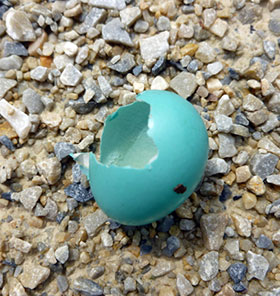
In the desert on a berm
above a cragged arroyo
something small, blue, round
shatters into shards
blows away in the wind
unexpected, out of place.
Later a bird launches itself
from a fence post, flying
higher, soon so far away
it turns into two birds
then vanishes in a cloud
gone like the eggshell.
© Brooks Robards

Radioactive Boars Claim Fukushima Province
by Laura Budofsky Wisniewski
Laura lives in the central Lake Champlain Valley, in the Lewis Creek Watershed, a lovely little tributary of which runs through her land. The plants and wildlife of Lewis Creek are currently being threatened by a drastic rise in housing and commercial development.

From the cool shade of the Fukushima Forest,
the wild boars look up.
Government drones are delivering bombs to the grasslands
like teats squirting milk into the mouths of sucklings.
Cesium 137 has been good to the wild boars.
At night, they lie down on embroidered pillows
in the empty houses of Katsurao Village.
They stroll broken avenues in early Spring
while delicate pink petals
float onto their black bristled humps.
The Kishus, once sleek with scraps from human plates,
now cower and run, nothing but ribs and white tails.
The wheel of dharma circles like a goldfish in a pond.
Humans and their dogs wander homeless.
The wild boars harvest great fortune,
great fortune.
© Laura Budofsky Wisniewski

Because He Chose
by Mark Mansfield
Mark lives in the Oswego River/Finger Lakes watershed.

When her kits are born,
the vixen stays in the burrow
for a few days to over a week.
The dog fox . . . brings her food.
He could have swerved.
Both lanes were clear
as he observed
near half a mile
of open road.
And what he hit
was almost home
to feed their kits.
He could have stopped,
or at least slowed.
Saw his black paws
and as he neared,
watched him pause,
then hit the gas
because he chose.
© Mark Mansfield

Musth
by Dion O'Reilly
Dion lives in the Soquel Creek watershed on a stream-cut terrace covered with a thin mantle of alluvium on a ten-acre triangular plot between Soquel Creek and its tributary, Love Creek.
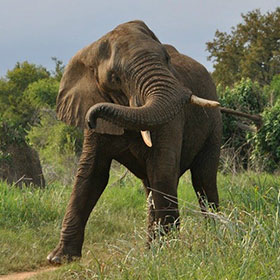
The word for when bull elephants are straight-up crazy
to smash, fuck and kill, their penises longer than
yardsticks, erect for months at a time, a stream of urine
dribbling a trail of stench, sludge of hormones
leaking from their temples and running into their mouths.
They tell the truth with trumpet, stomp, and stink. No
veneer
in the few wild islands of green that remain.
In zoos and on the streets of Burma, the spell lasts
only days because they’re chained, starved, held
in solitary. Weakening the body weakens
the frenzy. What else can be done? There’s no realm
vast enough for such delirium. I think of the rough
boys I grew up with, the ones who hunted and ate
squirrels, the flesh gamy and smelling of bay trees.
The barefoot trails my friends walked to the creek are gone,
and so are the steelhead, snagged on wormy hooks,
cooked in a blaze on the rocky floodplain.
Teddy Roosevelt said War is imperative upon honorable men,
hoping his sons returned with missing limbs.
Mohammed Ali, what would he have done without
his elegant power? Arjuna even. How to spread the holy
Word whispered to him by Krishna, if not by rendering
it in blood. How can the male sex give it up? Their smooth ivory
flashing in the savannah sun, the gore and puncture,
the strong semen sending exactly who they are
into this diminishing world.
© Dion O'Reilly

The Purpose of Bones
by Katherine Espano
Katherine lives in the lower St. Johns watershed, Florida, about 15 miles west of the Atlantic Ocean.

In my child-palm, the found bone
was a gondola on a moonlit river.
I gave no thought to an animal
curled, its last breath
a bright ember.
Innocence is a sweeter perfume
than wisdom, but wears off faster.
Now in corners, spiders catch
my old possibilities, wrapping them tightly.
© Katherine Espano

Gathering in the Anthropocene
by Jed Myers
Jed lives in Seattle’s Cedar River-Lake Washington watershed on a hill shaded with evergreens close to the Salish Sea. Evening mists often fill the nearby creek ravine and obscure the crows’ congress in the overhead branches.

Tidelines rise and press inland.
Hot seas widen the Ganges’ mouths.
The Bay of Bengal fills Bangladesh.
We are about to have guests.
*
The desert spreads, soil turned sand.
No roots—no water’s nest.
The Sahara’s white ocean floods the Sahel.
Tonight, expect our house full.
*
The Crescent wars torch the land.
Wild and tended plants burn to hell.
Hunger will have a great feast on who’s left.
We have more rice on the shelf.
*
Fences flatten to human deluge.
Razor wire breakwaters breached.
A locked gate is a mute curse.
Let’s light candles for visitors.
© Jed Myers

Bird Breaks
by Alicia Mountain
Alicia lives by the South Platte River with a view of the Rocky Mountains to the west on land that was home to Arapaho and Cheyenne communities before white occupation.

intransigent sparrow at home in Terminal B straw
wrapper
coffee stirrer nest on the
ever lit departures board
neon night sun pushed me out of the city
no blindfold
enough to keep me
a calm hooded hawk
and pigeons pecking at guttered chicken wings
in a
confusion too close to cannibalism
that pushed me out also
like a seagull when the shore turned out to be a
broad
parking lot puddle and how
I keep circling it in disbelief
© Alicia Mountain

Waiting in Line to be Added to the Endangered Species List
by Sharon Tracey
Sharon lives at the edge of field and conservation land in the Connecticut River watershed in Western Massachusetts. The Connecticut is the region’s longest river, flowing through five states, from the Canadian border to Long Island Sound.

If it is true that the relaxed pace of living
of a tree puts it in jeopardy, then what?
If you are used to living for centuries
I suppose you may run out of time.
No cooler climes coming. So many
standing in line. Some have filed
papers, submitted facts and figures.
There may be cutting in.
Who knows how long the Joshua trees
will wait? Members of the Yucca tribe,
the old ones remember being born
on the high desert, on a cool morning
in spring after a burst of rain as the poppies
bloomed & spread their buttered faces.
The prophets raise their tired arms to pray.
The people sleep, the fires burn.
© Sharon Tracey

Grazers
by Joseph Stanton
Joseph lives in the town of Aiea on the Leeward side of Oahu, a volcanic island in the middle of the Pacific Ocean. A ravine behind his house provides him with a larger than average supply of suburban wildlife.

A forest afflicted on its edges
by cattle, sheep, and goats
begins to lose its understory,
and the story that replaces it
tells of a gradual
eating away, eating away
so that dense forest becomes,
ever so gradually,
by degradation, year after year,
a pasture, lovely in its own way
but no longer a place
where the wild things are.
© Joseph Stanton

Hay Meadows Lost
by Philip Strange
Philip lives in the Southwest of England between moors and sea. His home town of Totnes lies in the River Dart watershed.

This is a land on the edge, a sloping terrain sandwiched between hills and sea, a patchwork of fields, hedges and trees. Buried deep in this coastal west Dorset landscape is Westhay Farm with its centuries-old stone farmhouse. Surrounding the farmhouse are flower-rich hay meadows managed in the traditional manner and enjoying a climate softened by the sea and its mists.
I scramble over a stile near the farm to access the public footpath through the hay meadows and my first impression is one of joyous, unfettered growth. The fields are carpeted with knee-high, yellow buttercups supported by thick grass covered in many rough, lozenge-shaped seed heads. In the bright sunshine of this early May morning, a sweet smell rises from the meadow to greet me. Lower down in the grass, I notice tight clusters of lemon-yellow flowers borne on thick reddish-green stalks. This is yellow rattle, a plant of traditional hay meadows. A black and yellow-striped bumblebee systematically works the yellow flowers, visiting each smooth, tubular bloom. The bee prises apart the two petals so that its long tongue can reach the nectar at the base of the flower. As it takes the sugary reward, it also acquires a dusting of pollen from the overhanging purple stamens.
At this time of year, the meadows are liberally scattered with the glittering, brightly coloured flowers of the green-winged orchids, standing defiantly in the grass on thick green stems. Many of the orchids are purple, but some are magenta, some violet and a few are white or pink, lending a mosaic of contrasting colour to the meadow. Each flower is composed of several florets arranged around the stem like jewels on a bracelet. The most visible and exquisite part of each floret is the broad, apron-like, lower petal with its central white stripe contained within a coloured halo. This white region is decorated with a pattern of eight or more irregular darker spots, the pattern unique to each floret and perhaps recognised by visiting pollinators. Green-winged orchids are a speciality of these meadows and their name refers to the green-veined sepals that protect each developing floret, now thrown back like wings.
It is rare to see wild orchids in the UK nowadays but to see thousands in one place is breath-taking. I was lucky to catch them today: they won’t last long and, as the seasons progress, other flowers will take their place in the meadows. By July the grasses will be dry and the colour supplied by cheerful newcomers such as purple knapweed and buttery-yellow bird’s foot trefoil. In late July the hay will be cut, this joyous, unfettered growth converted into winter animal feed.
……………………………………………….
Flower-rich hay meadows such as these were a feature of the British countryside in the spring and summer for hundreds of years, until the middle of the 20th century. Cultivation followed the rhythm of the seasons. Grasses and flowers grew in the warmth and wet of spring and early summer. Hay was cut in late summer and removed for winter animal feed, after the flowers had set seed. Animals grazed the fields in autumn taking advantage of the late-summer grass flush. The only fertiliser came from the autumn-grazing animals and, the following spring, plants grew, seeds germinated and the cycle began again. This was a carefully managed land cultivation system, in tune with the seasons and their weather. Hay meadows were celebrated in painting and in literature, so for example George Eliot, in Adam Bede referred to the “flower-sprinkled tresses of the meadows”.
The look of the British countryside changed dramatically during the 20th century as traditional systems of land management were swept aside. Changes in agricultural practice driven by fears about food security during the two world wars, together with increased dependence on artificial fertilisers, led to a massive loss of traditional hay meadows and the flowers that went with them. Only 3% of the flower-rich hay meadows present in the 1930s still remain.
But it’s not just the look that altered. These changes in farming practice together with increased use of pesticides significantly affected wildlife in the countryside. Farmland birds and pollinating insects such as bees, moths, butterflies and wasps were badly affected by the changes with some species declining by up to 85%. With increasing urbanisation, many people may not even be aware of these changes and the species affected.
Meadows like those at Westhay Farm might now be viewed as museum pieces showing us how the countryside looked before agricultural intensification took over and for that reason alone, they should be preserved. I believe, however, that their pesticide-free, fertile mosaics of grasses and flowers have much more to tell us. A meadow is a land at ease with itself, supporting a rich ecosystem comprising a wide range of plant and insect species. We can’t turn back the clock completely and reverse the agricultural changes that have occurred in our countryside but the richness of the hay meadows shows us how we can support the birds and pollinators that remain.
© Philip Strange

Six O'clock News
by Priscilla Frake
Priscilla lives within half a mile of the Brazos River in the Lower Brazos watershed about 45 miles from Galveston Bay.

The world is renaming itself:
Rising Bay. Shrinking Glacier.
Drowned Archipelago.
Meanwhile, I’m busy making stew,
chopping carrots (while there are carrots
to chop), caramelizing onions, adding bay leaves
and thyme as the news drones on
with snatches of disaster.
A new world:
Colony Collapse Disorder.
Umbilical wires tethering us
to a failing grid.
Tropical diseases swarming in
to northern latitudes.
I eat with the TV, then clear
the table, scour the soup pot,
put anxiety back
in its narrow drawer. I silence
the pundits with a click.
Sandblast of wind.
Spring accelerating.
Forests at flash point.
Hundred year storms
stacked up at the coast.
Incoming drought or flood.
I walk through the house
locking doors, securing
windows. I set the alarm,
then slip into the blackened acres
of incandescent dreams.
© Priscilla Frake

Shade Life
by Luke Wallin
Luke lives in the Sakonnet River watershed basin near the Atlantic Ocean on a stream that flows north.

Half a million years ago, we
or something like us
studied sunburnt grasslands
from the safety of our trees.
Shade was refuge; predator panorama
was our prospect, our long view.
Our brains loved the in & out,
the way we raced around & round then
beat the leopard up the tree.
We were born to think most clearly
watching veins of leaves
transferring light, surveiling those who'd
gobble or be gobbled by our family.
Now we pay a premium for hidden perches
with good views. Calming nerves, confirming status,
lookouts give us leave to work out harmonies and
strategies. We listen for the footsteps as we measure
our companion's silence. Unconsciously
we seek a prospect/refuge mate, one to stand the
watch, perhaps, the other to dream adventure.
Asymmetries of green leaf patches, landscape beauty,
secret symbols, whisper of the old fitting, sew our
hearts together in survival song.
© Luke Wallin

temporary ongoing
by Gene Berson
Gene lives in the northern California foothills in the Yuba River watershed. Everyone goes to the river. Like a temple, with its falls its rapids its green pools, it seems to restore everyone in a personal way. We feel our kinship through it.

a great blue heron flaps and lifts
from the estuary
where splintered pallets float
gathering the daily tide of wrappers and scum --
the bird tilts
veers back over the freeway
fishing line hanging from its feet
to a cypress where it
luffs its wings
dances for footing, slightly
hampered by the monofilament
before settling
onto branches nodding
under its weight
neither of us
can do anything about
the problem
but there’s no getting away
from it: I’m the one
with fingers
© Gene Berson
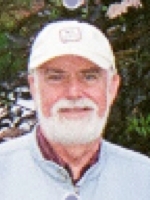
Spring Camp
by Richard Spillman
Richard lives in Hurricane, West Virginia, halfway up a steep hill. Deer negotiate it nicely, stopping by on their way up or down to eat his flowers and bushes and the bark off his trees. The beauties there are quiet—not the sort people drive miles to see – but it’s lovely to return to: lots of woods and small streams.

We hang the food but forget the Tupperware.
After all, the brownies are gone.
That night we wake to a grizzly cracking plastic,
looking, as we sometimes do,
for pleasure in the stale air of used things.
Mike tosses his canteen against a rock,
and the bear sways closer,
looking over invisible glasses
at the bright grubs moon-bleached bags
make of our cocooned bodies.
He sniffs the canteen then golfs it back
and shambles to the creek to drink.
Later a herd of mule deer whisper through,
our scent no deterrent,
and forage leavings we cannot see.
Tails twirling they drop scat in unison,
then pick their way between our silent forms
and into the moonless woods.
© Richard Spillman

Urban Birds
April 25, 2017, Center City Philadelphia
by J.C. Todd
J.C. lives in the Delaware Direct watershed, .6 miles west of the Delaware River, on a low rise that, in Colonial times, drained into the riverine marshes surrounding the Philadelphia city docks. The trees of neighborhood cemeteries and parks attract owls, hawks, and woodpeckers as well as sparrows, finches, robins, crows and other Mid-Atlantic urban regulars.

cloud-heavy false dawn
Sonny on the bridge, his hard bop
this robin’s broke song
knob on a gnarled branch
redtail perches, old graveyard
a new killing field
rain all day, pots filled
mint soaked to its roots, sipping
at cat’s bowl—house finch
alley of leafing pears
azaleas popping, thrush wobbling
tattered wing, no tail
© J.C. Todd
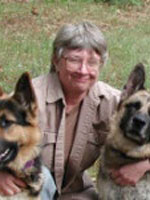
Septic Creek
by Taylor Graham
After 24 years between forks of the Cosumnes, Taylor now lives among tributaries of the American River.

Duet of earth and water,
a love-song in spring, as creek
murmurs along the banks made green
by winter rains. Weather’s
the conductor – in storm-flood, a commander
ordering the advance downslope,
deliriously rushing and gouging. This creek
that starts in farmland soon
reaches the asphalt outskirts of town.
Here, you call it Septic Creek,
banks littered with bottles,
TP behind bushes, a beer-can crowning
the crotch of an old willow.
Who knows what waste the water carries
in its flow?
Oh sand and gravel, bulrushes
and snails, nature’s unheralded filtering.
A simple, elemental process.
Weather is air and free-ranging water
making music with the deep-voiced land.
© Taylor Graham

The Pond the Trees the Sky
by Taylor Graham
After 24 years between forks of the Cosumnes, Taylor now lives among tributaries of the American River.

Across the field, through the post &
crossbar gate, and along the creek full now
after winter storms, I’m headed
for the pond where lilies float in summer,
and sun is checkered shade on shore;
across from the Nisenan village,
cedar-bark tepees in a meadow, a log
circle for sitting – a gathering place of tribes
long ago. Soon there will be drumming
under air-born clouds, story-telling poems
to redeem a past. But – the pond’s
shaved bare. Six tall ponderosas felled,
bodies lying with their crowns in meadow.
Bark beetles. Not even scent of woodgrain’s
left. Our blessed summer shade is gone.
I want the pines back. How long
before a seedling grows tall enough
to shadow these benches
where we’ll sit to filter light and darker
words – what we humans do with loss.
© Taylor Graham

Nest of
by Bruce Hawkins
Bruce lives between the Cerrito Creek and Baxter Creek watersheds near the eastern shore of San Francisco Bay.
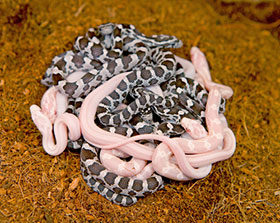
Babysnakes in tall grass
broken in upon
and the knot they are
knowing just to do
is no more in an instant
than the skeleton
of a breeze where
leaves still quiver
© Bruce Hawkins
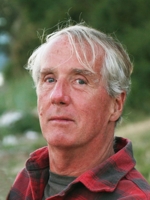
Goldeneye
by Mike Dillon
Mike lives in a small town on Puget Sound within view of the Olympic and Cascade mountain ranges and a few miles from Chief Seattle's grave.

Ever tuxedoed in black and white
you return when October’s flame
dwindles down toward November’s ash
to paddle around in debonair calm
with no particular place to be, it seems.
You’re with us when we light candles
to earth’s longest night.
You’re with us during the slow hike
through gunmetal gray all the way
to the angelic-headed daffodils.
And sudden sun. And clouds white as lambs.
Pardon my inattention while you sift north.
One day the bay is blue and empty.
One day I realize it is again a little too late
for another of life’s farewells.
© Mike Dillon

Cedar Waxwings
by K.E. Duffin
K.E. lives in the Mystic River watershed in Somerville, Massachusetts.

Your Excellency—
I report with a heavy heart
the deaths of two Chinese emissaries
recently sent from the Cloud Court.
Deceived by falsities—
a mere reflection of forest and sky above—
they never meant to die from a moment’s distraction.
(They were in love!)
Adorned with red fringe and yellow tassels, perfection
is the last urgent missive they would have us decode,
still warm, side by side, in their silken robes.
© K.E. Duffin